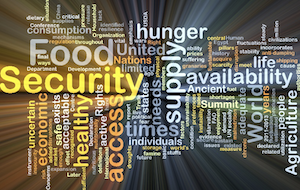The Nexus of Trade and Food Security Amid Global Conflicts
By Victoria Holmes, Braumiller Law Group
The intricate interplay between trade and food security has emerged as a vital global issue, one that is closely interwoven with the tapestry of international conflicts and political instability. Remember the 2019 pandemic when toilet paper supply chains were interrupted? Now imagine that on a much larger scale with basic food staples like rice, wheat or corn.
Food prices, covering both groceries and dining out, went up by 2.2% from February 2023 to February 2024, as per the CPI report out on March 12 by the Bureau of Labor Statistics.
In today’s interconnected world, where countries rely heavily on international trade for their food supply, any disruption in the global market can have far-reaching consequences. This is especially true for developing countries that are already facing challenges such as poverty, climate change and conflict. But, what food chains are currently being interrupted?
Ukraine and the Global Bread Basket
One obvious example of how trade and food security are intertwined with global conflicts is the situation in Ukraine. As one of the world’s top grain exporters, Ukraine plays a crucial role in maintaining the world’s food supply. However, Russia’s invasion of the sovereign nation has reduced grain exports, leading to higher food prices. According to a report by the Ministry of Agrarian Policy and Food of Ukraine, Ukraine exports dropped by 90% in March, April, and May of 2022. The UN helped enact a grain deal where grain shipments were protected as they passed through the Black Sea. Historically, the country has accounted for 9% of the global wheat market and 12% of the corn market, according to the USDA’s Foreign Agricultural Service.
This has had a ripple effect across the globe, as countries that rely on Ukrainian grain for their food supply have been forced to look elsewhere or pay higher prices. This not only affects the economy and political stability of these countries, but it also directly impacts the food security and well-being of their citizens.
Grain Strains in Africa
Africa serves as a poignant case study for the impact of Ukraine’s conflict on trade and food security. Many African countries rely heavily on imported grain, and with the disruption of Ukrainian exports, they have been forced to turn to other sources. However, these alternative options often come at a higher cost, making it difficult for already struggling countries to feed their populations. This has also led to an increase in food aid requests and further exacerbates issues of poverty and hunger in the region.
Houthi Attacks in the Red Sea
The geopolitical tensions in the Red Sea region have escalated considerably, further complicating the global grain trade. Houthi attacks on shipping routes have raised serious concerns over the safety and security of goods. These attacks not only pose a direct threat to the crew and vessels but also contribute to the uncertainty in the global food supply chain, leading to increased insurance and shipping costs. This scenario exacerbates the already high food prices, placing additional financial burdens on countries struggling with food insecurity. In an interview for the Associated Press, CEO of a supply chain management company Flexport Ryan Petersen said that this conflict could surge prices by 2%. This may seem like a small percentage, but it can have a significant impact on the affordability of food for millions of people.
Panama Canal and Water Levels
Many shipping routes are diverting their paths from the Red Sea, but not all routes are available. The Panama Canal is facing one of its driest seasons in 140 years. The Panama Canal Authority (ACP) has reduced daily traffic from 36 to 24 vessels. This is due to the drought in the region, which has caused water levels in the Gatun Lake, a crucial part of the canal, to drop significantly. These constraints are impacting energy product carriers, container vessels, and ships transporting grain from the United States. Most companies looking to divert trade from the Red Sea to the Panama Canal could mean longer transit times, resulting in perishable goods spoiling before reaching their destination.
Broader Implications of Trade Disruption
Besides economic turmoil, hunger and disruptions to the food chain can be a catalyst for political unrest. Populations grappling with the governing structures that fail to provide food security can lead to social unrest. Civil wars can lead to displacement, refugee crises, and humanitarian emergencies. Furthermore, reduced trade through major shipping routes can lead to supply chain disruptions for essential goods such as medical supplies and other critical resources. Additionally, trade disruptions can also impact the environment. With ships taking longer routes and consuming more fuel to avoid certain areas, there is an increase in greenhouse gas emissions and pollution in those areas. This has detrimental effects on marine life and contributes to climate change.
Finding Solutions
Efforts are being made to address the challenges posed by trade route disruptions. Countries can diversify their import sources and develop local agricultural capacities to cushion against global supply chain disruptions. Investment in agricultural technology and sustainable practices can enhance food production resilience and diminish reliance on imports. Finally, implementing systems that can predict impending crises might allow preemptive action to protect the most vulnerable populations.
Conclusion
In light of the complexities outlined, it’s evident that disruptions in global trade routes have far-reaching and multifaceted impacts, ranging from economic loss and environmental harm to social unrest and political upheaval. Addressing these challenges necessitates a multi-pronged approach that includes diversifying trade and import sources, investing in local and sustainable agriculture, and improving predictive analytics to foresee and mitigate crises before they escalate. Collaborative global action and innovative solutions are imperative to ensure resilience against the ripple effects of trade disruptions, safeguarding not just the supply chains, but also the communities and ecosystems that depend on them.

























